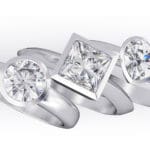Try telling your zealous dental hygienist you don’t need to floss. Bring up the 2016 reports that researchers haven’t been able to collect enough evidence showing flossing can prevent cavities or severe gum disease. Add that The American Dental Association (ADA) is playing a hunch when their website claims flossing “is an essential part of taking care of your teeth and gums.” Then hunker down in the reclining padded dentist’s chair and wait. So what? she’ll say. Why take a chance? Sacrificing teeth to decay or bone loss is not a pretty picture.
Some limited evidence indicates that cleaning between teeth does reduce bloody gums and the inflammation known as gingivitis. Adding flossing to regular brushing has been shown to reduce gum bleeding. It’s logical to think that reducing gingivitis will slow the progression to bone loss, argue dentists. Anything you can do to mess with the plaque between your teeth and prevent cavities is better than nothing. Any method you use to help protect gums against gingivitis and bone loss is a winner.
Brushing is great, but brushing can be a chore. If you’ve made the move to electric toothbrushes, you’re probably brushing more. The Cochrane Database of Systematic Reviews find that powered toothbrushes are better than manuals at reducing plaque and gingivitis. So, why isn’t brushing alone enough?
Do you fear the floss?
Toothbrushes clean only three out of five surfaces of the teeth—the front, back and top—and they can’t reach between teeth to get at the two side surfaces. For that, you’re going to need to use an interdental cleaner. If discomfort and bleeding gums discourage you from old-fashioned string flossing, check out alternatives. The ADA hands out a Seal of Acceptance and the Food and Drug Administration (F.D.A.) also puts a stamp of approval on interdental cleaning products. Well, maybe not for the wooden toothpick at the local diner, but you can find others backed by clinical and lab data submitted to the ADA.
Finding something that you’re comfortable with means you’ll be happy to use it every day, and that’s important. Once flossing is no longer uncomfortable, people say cleaning between their teeth becomes a habit. Teeth feel cleaner and less sensitive. And who knows your teeth better than your dentist? She can make recommendations based on the spacing between your teeth, the health of your gums and any dental work such as braces or a bridge.
Interdental brushes
These tiny, textured brushes can be easier to maneuver than floss. They are designed to reach between teeth.
Tape floss
People who have tightly spaced teeth may find a wide, flat tape is easier to use than a string. Tape floss also feels better, they say.
Toothpicks
Take your pick between wooden or synthetic or use both. The Cochrane Review says cleaning sticks made from synthetic materials help reduce plaque but not gingivitis, while wooden toothpicks reduce gingivitis but not plaque.
Oral irrigators
Water flossers and air flossers are electronic devices that get between teeth to remove plaque. One shoots a thin stream of water and the other emits an air stream along with bursts of tiny water droplets.
Floss picks
This disposable tool holds floss string taut on one end and on the other end incorporates a toothpick.






